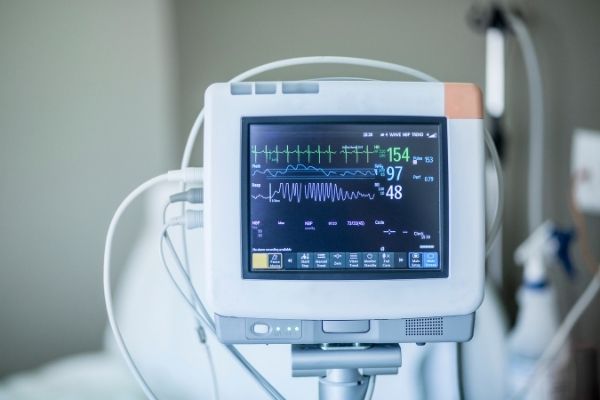How Does Human Machine Interfaces (HMI) Technology Benefit the Medical Industry?
What is Human Machine Interface?
Human Machine Interface, otherwise known as HMI, is the user interface that allows humans to interact with machinery or other devices. Human Machine Interfaces are used in several different industries including automotive, industrial, and medical. HMI is especially important inside of a hospital setting as it helps to provide functionality to devices that improves both the operator and patient’s experience. In the medical industry, engineers are continuously looking for ways to innovate existing technology as lives are truly dependent upon their functionality and consistent operating parameters.
The History of Human Machine Interface:
Back in the 1950s, HMI first made its entrance into the medical field. However, it was done primarily through a process known as batch processing, which was used to input health data. To successfully accomplish this task, it required the user to specify the sequences of tasks and details. This was typically done with a punch card and fed through a machine that would deliver the results. However, all of the information had to be entered sequentially with all the details involved, which oftentimes led to the possibility of user error.
Graphical User Interfaces (GUIs) were also a common HMI system following batch processing. With these interfaces, users were able to engage with machines through elements such as windows, icons, or buttons. This period was known as the WIMP-Phase, and they were able to interact with the interface via a keyboard or mouse.
Every ten to fifteen years, new technology would arise that contributed to the further advancement of Human Machine Interfaces as we know them today. It was not until 1984 when the first transparent multitouch screen was created. This device used a conductive surface with voltage applied across it, with an array of touch sensors that laid on a cathode ray tube (CRT) display.
Common Human Machine Interface Technology Today
Human-machine interfaces are very common to see inside of a patient’s room at the hospital, such as Patient Room Displays to monitor the patient’s vitals and other medical device interfaces. HMI is also commonly used on critical equipment controls and membrane keypads for medical equipment. Most HMI interfaces found in a hospital setting are touch screens or membrane switches. One of the most common applications of a membrane switch in hospital settings is the buttons on a patient’s IV pump. These buttons are very thin and completely sealed.
Typically, within the medical field membrane switches are very common. Buttons can be made in a variety of ways and mechanical buttons have moving parts. However, many healthcare industry designers know that moving parts can oftentimes be a problem. If the part moves in and out of a device like a mechanical button, it is troublesome as moisture and germs can live in, and ruin, the device. This is why membrane switches are a strong alternative to mechanical buttons and are more commonly used in the medical industry, as they can be sealed and built with multiple layers of protection.
Design engineers have a variety of options to choose from in order to make their device last, even in biohazardous environments. The top layer of a membrane switch, typically a graphic overlay, can be considered the most important in the design process. This is the only layer of the membrane switch that the user can see.
biohazardous environments. The top layer of a membrane switch, typically a graphic overlay, can be considered the most important in the design process. This is the only layer of the membrane switch that the user can see.
Buttons on a membrane switch are designed a lot differently than a mechanical switch design. Membrane switch buttons are usually embossed to a specific height. By embossing buttons, it gives them a level of elevation from the rest of the overlay. Typically, underneath the button sits a metal dome. The metal dome is used to give a tactile feel to the switch and provides the user feedback that the button has been activated.
The layer under the metal dome is a screen-printed circuit layer. Once the button and dome are pressed, it completes the circuit and sends a signal to the device indicating what button is being pressed.
Sensors in HMI
Another common design for HMI is to use sensors as buttons, and there are several different types that can be utilized. One example is a force-sensing resistor, otherwise known as an FSR. An FSR is a button that works by sensing the pressure applied directly to the button.
Another example is a capacitive touch sensor. Capacitive touch or cap touch sensors are very innovative technology. These sensors can be molded directly into the interface. By in molding the cap touch sensor, all of the electronics are concealed by hard protective plastic. With a cap touch design, buttons on the interface are completely flat. Users become aware that the button is activated through haptic feedback such as lights and sound.
One interesting fact about capacitive touch sensors is that they work by using the user’s electrical output from their finger to send signals throughout the device. One negative of using cap touch is that the user must not wear thick gloves that will block the electrical stimulus from the finger to the interface. A good alternative to that problem could be using a stylus or some type of conductive pen to bridge the connections.
Depending on design constraints and end application, engineers will need to consider if capacitive touch or force sensors are appropriate for their HMI design.
The Benefits of Human Machine Interfaces in the Medical Field:
HMI has a number of distinct benefits when used in a hospital setting. A few of them are:
Chemical Resistance:
Design engineers can choose from a wide variety of materials to make their medical device more robust against chemicals. Harsh cleaning chemicals can cause many user interfaces to deteriorate or stop working properly if the interface does not have the proper materials selected. Biohazardous fluid can get into a lot of places within the hospital setting and harsh chemicals are constantly being used on the equipment to keep them free of contagious bacteria. Protective layers of material can be applied to the top of the graphic overlay of the interface or sub-surface printing can protect the branding or instructions from being worn away.

Easy to Sterilize:
Most HMI’s, such as membrane switches or in-mold electronics, are very easy to clean. The interface has no exposed parts where harsh chemicals or biohazardous materials could enter the device. The top layer of the HMI can be completely flat, so there is no need to clean around buttons or other open-moving parts. This feature also increases the interface’s lifetime since the pieces are less likely to break.
Portability:
HMI interfaces were once thought of as being thick and bulky, making portability nearly impossible. However, with advances in technology, our team at BTI has been able to resolve this once pressing issue. HMI systems designed by BTI are light in weight and relatively thin, making portability no longer a problem.
Enhanced Communication:
In a hospital setting, communication is key. HMI is able to enhance communication abilities, as it can connect multiple different devices and machines together. This ultimately will enhance the communication abilities between these interconnected devices, as well. Better communication will also enhance the functionality of the devices and machines.
Innovative Technology:
Robotic-assisted surgeries are one of the most innovative and important technologies being used in the medical field today. Designing an easy-to-use and durable HMI is essential to the livelihood of surgical patients.
As a Design Engineer, there are many things to consider about the user interface experience. Innovating the device is key to being able to best help doctors and hospital technicians operate the equipment safely and efficiently.
Another innovative technology being added to medical devices is called electro-Magnetic Interface or EMI shielding. Many medical devices contain Bluetooth or Wi-Fi connectivity features, a layer of EMI shielding can be added to devices to prevent them from receiving other devices’ frequencies. EMI shielding is a great way to protect your device from being interrupted by other technology within the hospital.
Conclusion
Human Machine interfaces have been rapidly advancing over the past century. The further advancement of interactive HMI and user interfaces have been drastically beneficial to the medical industry. HMI will continue to evolve, as new and unique applications continue to be discovered.
To get your next HMI project started, or to learn more about what interface will work best for your project’s design, reach out. Our team of experienced engineers is readily available to help!
 Meet the Author: Jaclyn King
Meet the Author: Jaclyn King
Jaclyn is a Marketing Communications Specialist on the BTI Team. She serves as the Content Manager, where she primarily manages social media channels, SEO, Public Relations, and website development. To get to know more about Jaclyn, check her out on LinkedIn!

Meet the Author: Ashley Foster
Ashley Foster is a graduate of Slippery Rock University, where she earned her Bachelor’s degree in Business Administration, majored in Business Management and minored in Marketing. While Ashley was studying at SRU she found a passion for marketing. Although she is busy working, she spends her free time traveling and hiking with friends. She is also a volunteer for the American Marketing Association, Pittsburgh Chapter, and an active alumni member of FCCLA. Read more of Ashley’s Blogs!